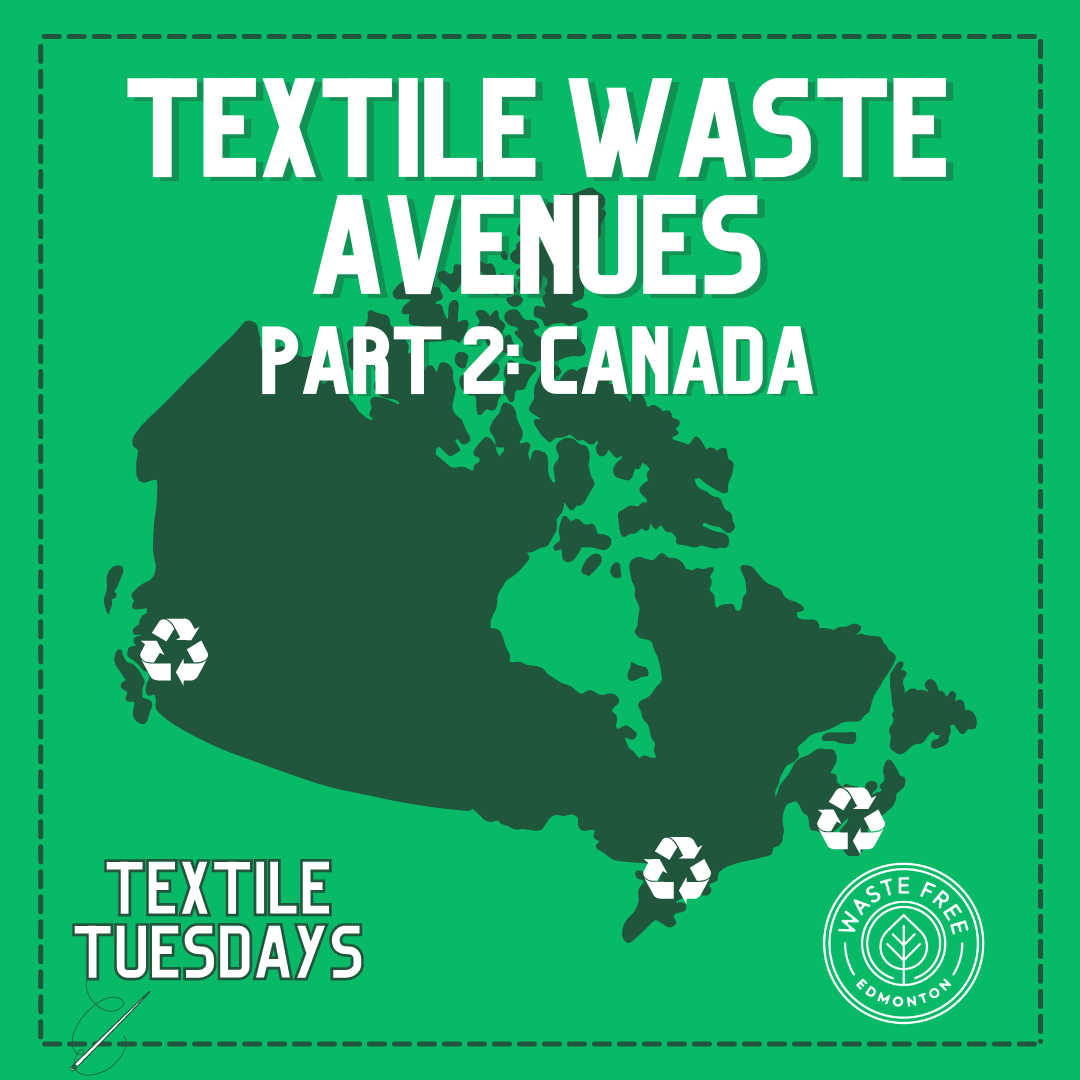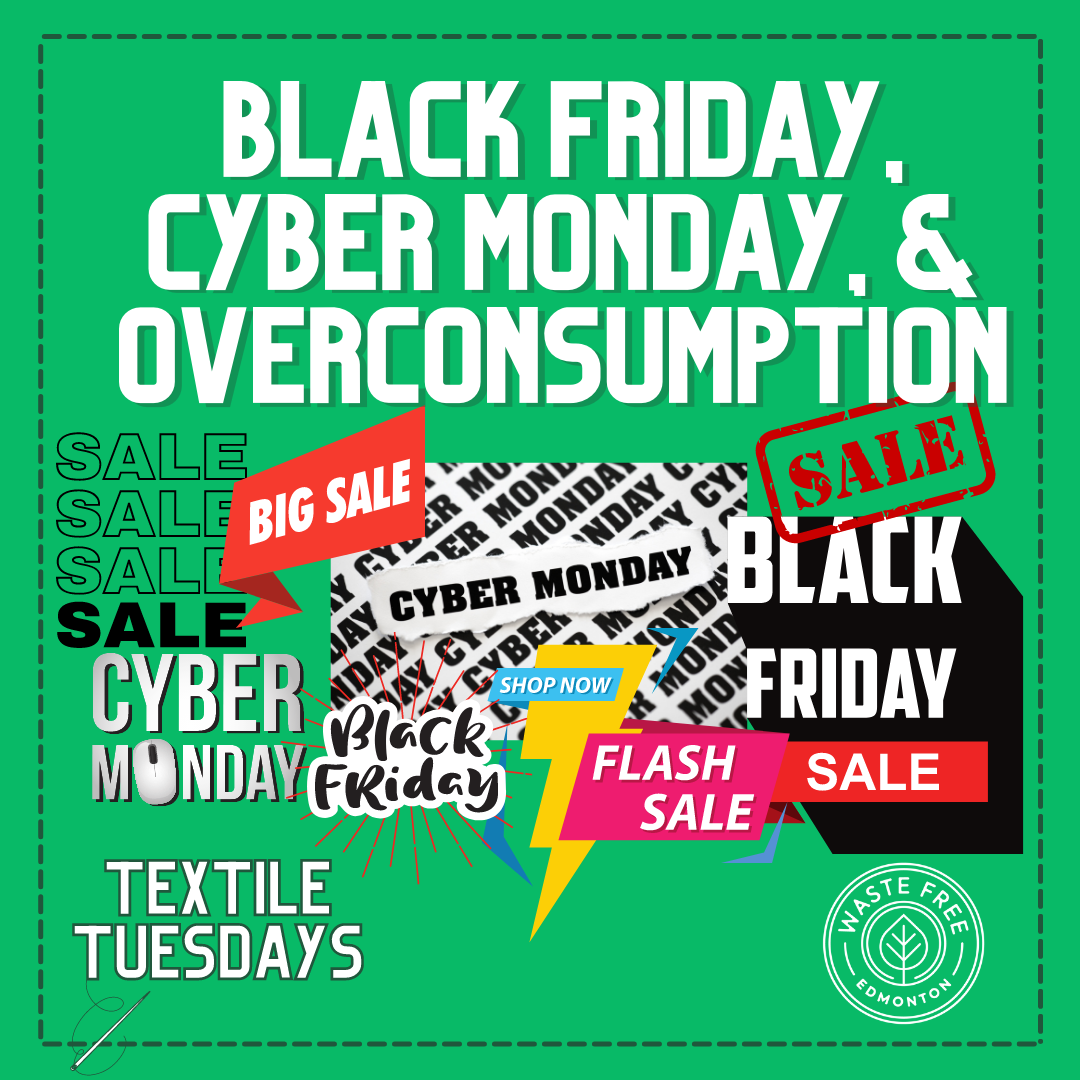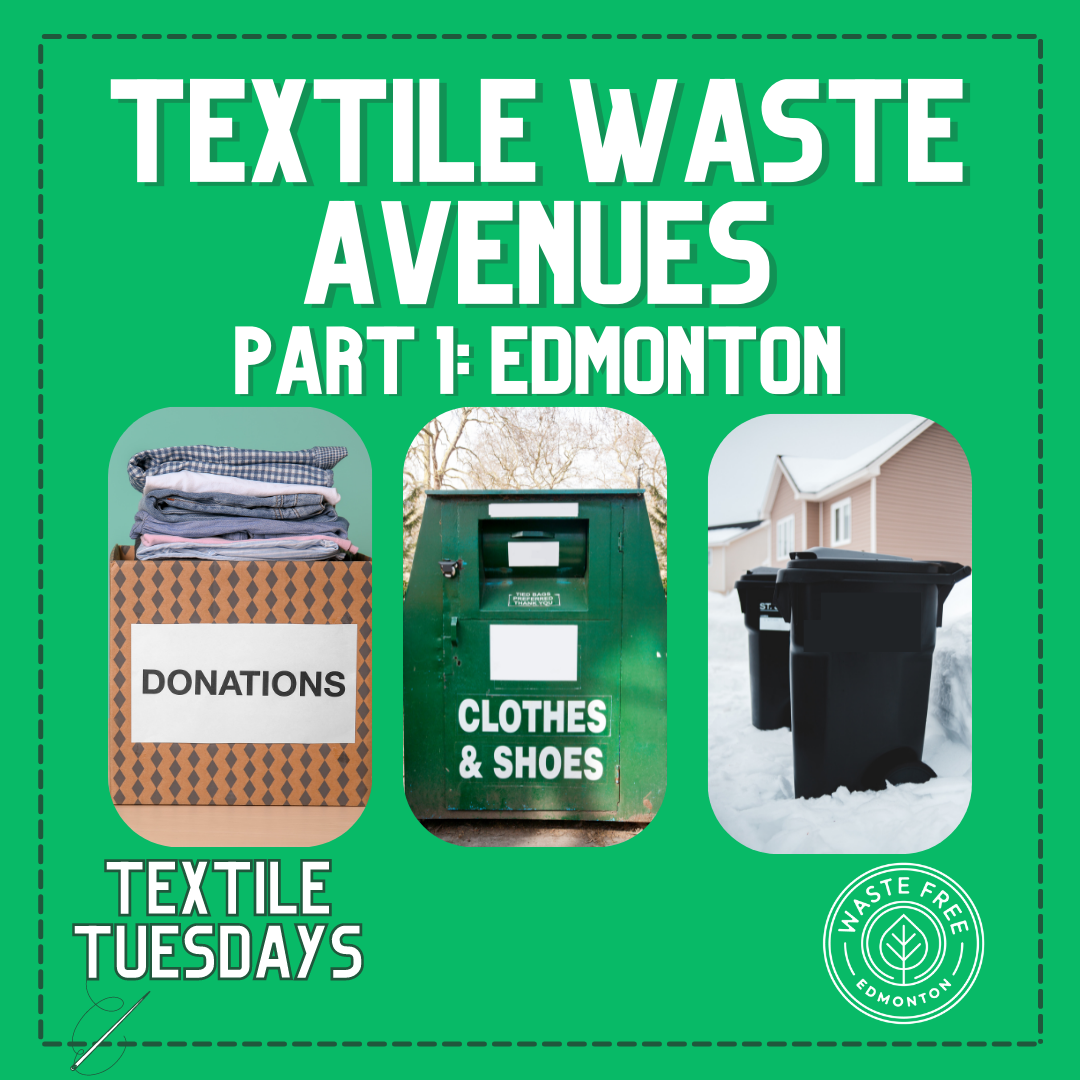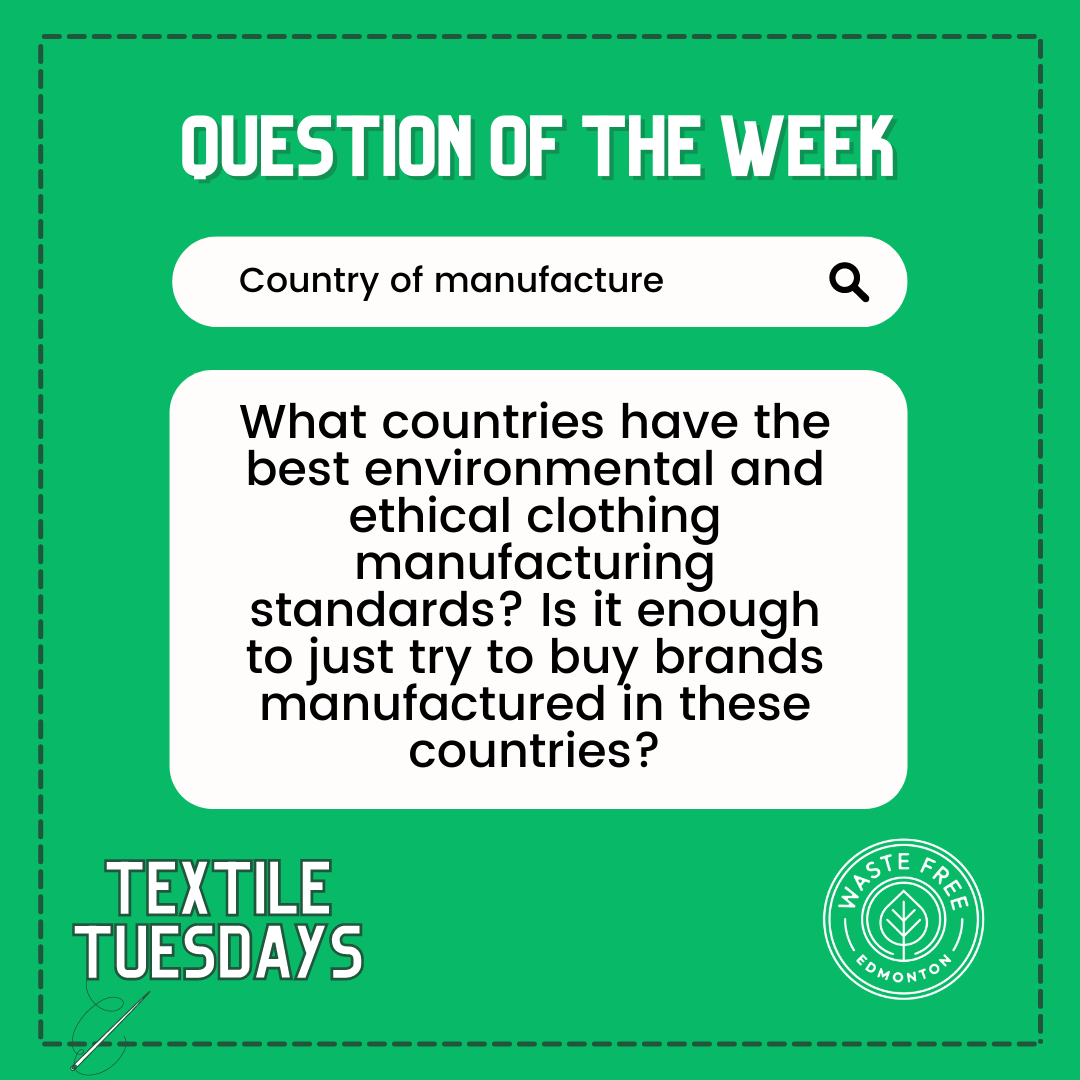Today we’re expanding on our discussion of avenues for textile waste. Within Canada, there are various initiatives at the provincial, municipal, or company level. We’ve listed some examples of these initiatives below.
In April 2017, the City of Markham banned textiles from the garbage. Instead, residents drop off their unwanted textiles in bins located throughout the city where they are picked up and sorted for reuse or downcycling into products such as stuffing or insulation. As someone commented on our previous post about avenues for textile waste within Edmonton, second-hand or thrift stores like Goodwill also make their unwearable donations into items such as rags.
Similar initiatives have been introduced elsewhere such as Nova Scotia where a collective of six organizations have come together to form the Association for Textile Recycling (AFTeR). In 2015 alone, 11 million pounds (~4990 tonnes) of textiles were collected in Nova Scotia, with only 5% ending up as waste. BC’s Return-it Textiles program has diverted more than 485 tonnes of textiles since 2019 through its 46 drop-off locations.
Check out the report Fashion Takes Action published entitled ‘A Feasibility Study of Textile Recycling in Canada’ which you can download for free on their website. They are currently conducting a mechanical textile recycling pilot with 100% polyester post-consumer garments.
General Recycled is a Canadian company which has recently expanded and scaled up its operations in Quebec. They take used FR coveralls made from aramid fibres to be shredded and reincorporated into new coveralls. We hope they’ll be able to expand into other fibre types in future!
Canadian company Native Shoes collect their shoes back from customers when they’re no longer usable, and the shoes are ground up and used in the construction of playgrounds.
All these amazing ways to reduce fashion and textile waste, and just in Canada — stay tuned for our evaluation of textile waste reduction internationally.





